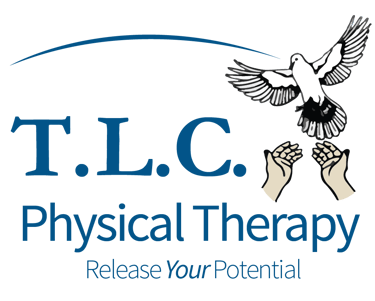Using Physical Therapy to Treat Vertigo
Struggling with vertigo? Discover how physical therapy can help you regain balance and improve your quality of life. From understanding the causes of vertigo to effective treatments like the Epley Maneuver and gaze stabilization exercises, this guide provides actionable insights to manage your symptoms. Learn how TLC Physical Therapy’s expert team can create a personalized plan to help you feel steady and confident again.
Jason Lamendola PT
1/2/20253 min read


1. What Is Vertigo?
Vertigo is the sensation of a false sense of motion, causing individuals to feel as though they are rotating, swaying, tilting, or rocking, even when standing still. Some people experience the environment moving around them, which is aggravated by movements of the body or head.
While vertigo itself is not life-threatening, it can significantly impact your quality of life, making everyday tasks difficult and frustrating.
2. What Causes Vertigo?
2.1 Common Causes of Vertigo
The causes of vertigo vary and can stem from several medical conditions, including:
Vascular or circulatory impairments.
Inner ear infections.
Cervical spine issues.
Problems with the central nervous system.
2.2 Types of Vertigo
Vertigo is classified into two primary types:
Peripheral Vertigo: This accounts for approximately 80% of vertigo cases and is often associated with benign paroxysmal positional vertigo (BPPV).
Central Vertigo: Making up about 20% of cases, this type is caused by issues within the brain, such as lesions on the brain stem, migraines, or multiple sclerosis.
3. What Is Benign Paroxysmal Positional Vertigo (BPPV)?
3.1 How BPPV Develops
BPPV occurs when tiny crystals of calcium carbonate, called canaliths, dislodge and float into the fluid-filled canals of the inner ear. This disrupts the normal flow of inner ear fluid.
3.2 Why BPPV Causes Conflicting Signals
The interference caused by these canaliths sends false signals to the brain, making it believe you are moving when you are not. These mixed messages—one from your affected ear and others from your eyes and unaffected ear—lead to the spinning or tilting sensation characteristic of vertigo.
4. Can Physical Therapy Treat Vertigo?
4.1 How Physical Therapy Helps Vertigo Patients
Physical therapy is an effective way to treat vertigo. Therapists assess each patient’s unique condition and create a tailored treatment plan to help them manage symptoms and regain mobility.
Treatment may involve performing specific head and neck movements or teaching patients exercises to alleviate and treat vertigo symptoms.
4.2 Addressing Post-Vestibular Imbalance
For patients who continue to experience dizziness or balance issues after vertigo resolves, therapists design targeted programs to address these lingering problems. Education and strategies for symptom management are key components of these plans.
5. What Are the Common Physical Therapy Treatments for Vertigo?
5.1 Epley Maneuver
The Epley Maneuver is a series of guided head movements designed to reposition the dislodged canaliths. Here’s how it’s done:
Sit upright on the edge of your bed.
Turn your head about 45 degrees to the right.
While keeping your head angled, quickly lie back and hold this position for 30 seconds.
Turn your head 90 degrees to the left and hold for another 30 seconds.
Turn your head and body fully to the left, rolling onto your side. Hold for 30 seconds.
Gently sit up.
5.2 Brandt-Daroff Exercises
These exercises involve alternating between lying and sitting positions to reduce dizziness. Steps include:
Sit upright on the edge of your bed.
Turn your head about 45 degrees to the left.
Keeping your head turned, lie on your right side and hold for 30 seconds.
Slowly return to your starting position.
Repeat on the opposite side.
5.3 Gaze Stabilization Exercises
Gaze stabilization helps improve balance and focus. To perform this exercise:
Hold a card with text or an image in front of you.
Fix your eyes on the card.
Turn your head from side to side while keeping your eyes focused on the card.
6. How Often Should You Perform These Exercises?
6.1 Importance of Patience and Consistency
For physical therapy to work effectively, it’s crucial to be patient and consistent with the exercises. Perform them regularly and allow dizziness to subside between movements to avoid discomfort.
7. Final Thoughts: Does Physical Therapy for Vertigo Really Work?
Physical therapy has proven to be a successful treatment option for managing vertigo and its associated symptoms. With professional guidance and a commitment to the prescribed exercises, many patients experience significant relief.
If you’re struggling with vertigo, consult a licensed physical therapist to develop a treatment plan that works for you. Your quality of life can greatly improve with the right care. By following the guidance in this article, individuals experiencing vertigo can take steps to improve their balance, regain stability, and enhance their quality of life. If you're seeking professional support to manage vertigo and reduce dizziness, visit one of TLC Physical Therapy's convenient locations. Our expert team provides personalized care and treatment plans tailored to your unique needs.
